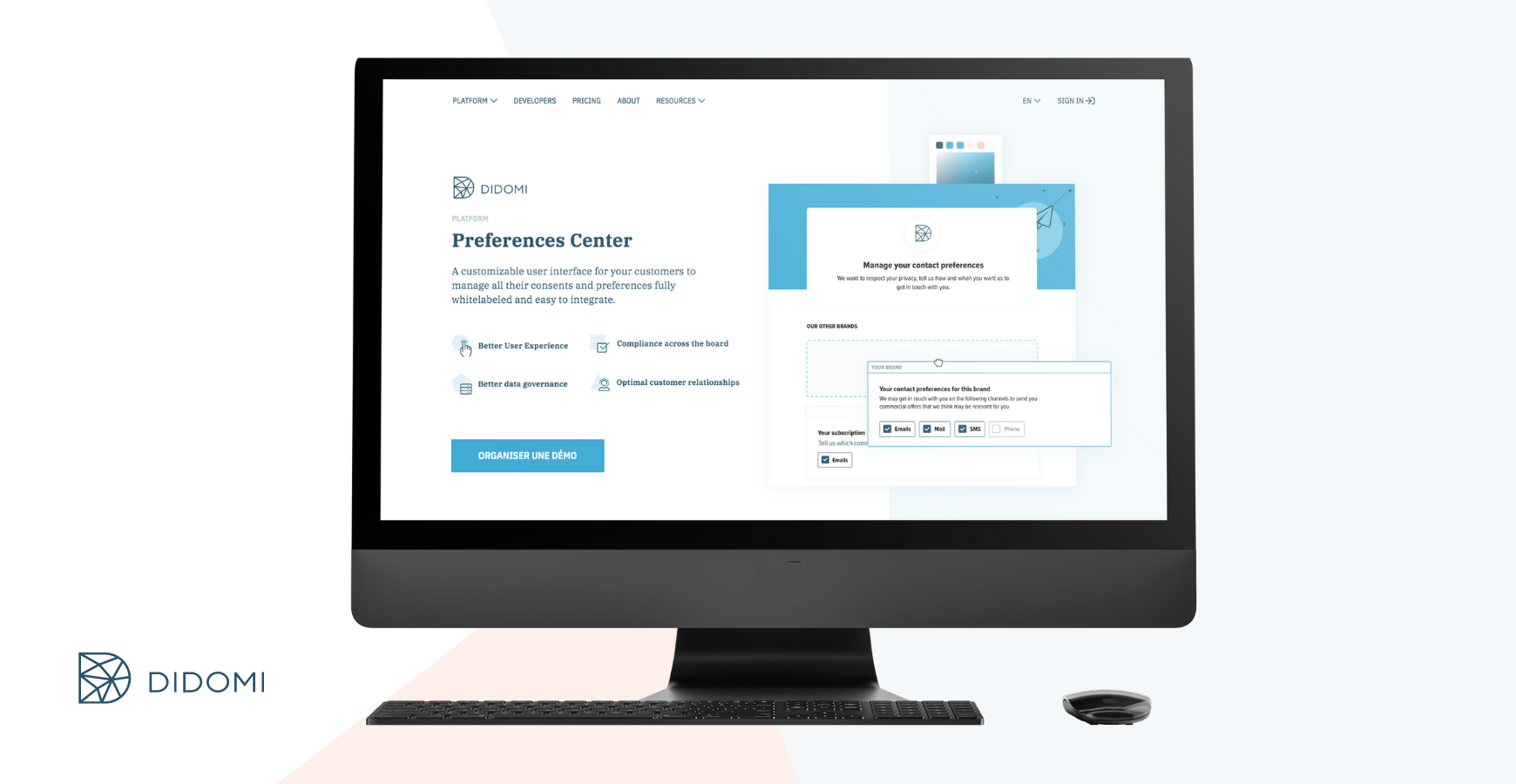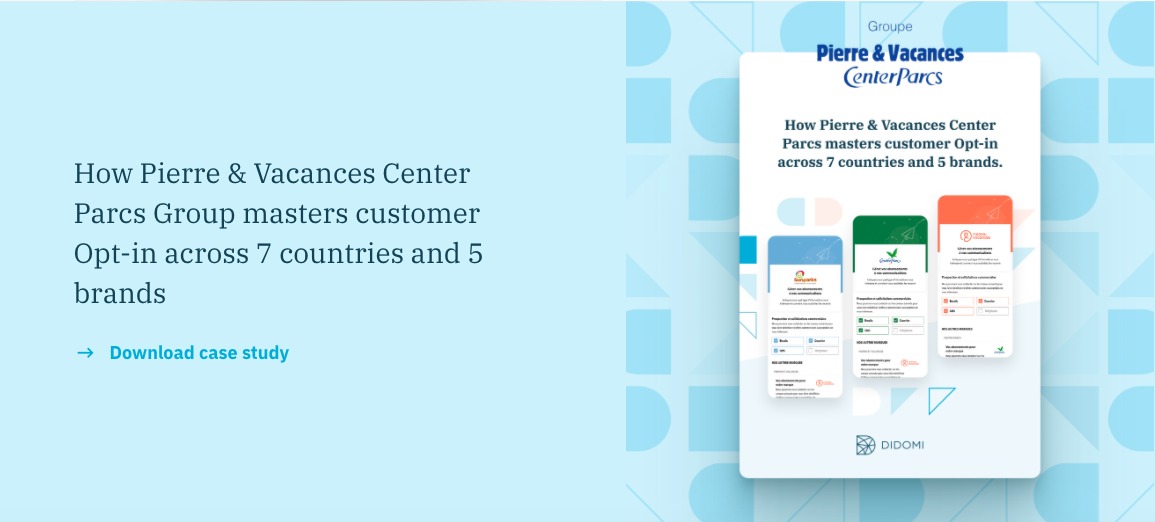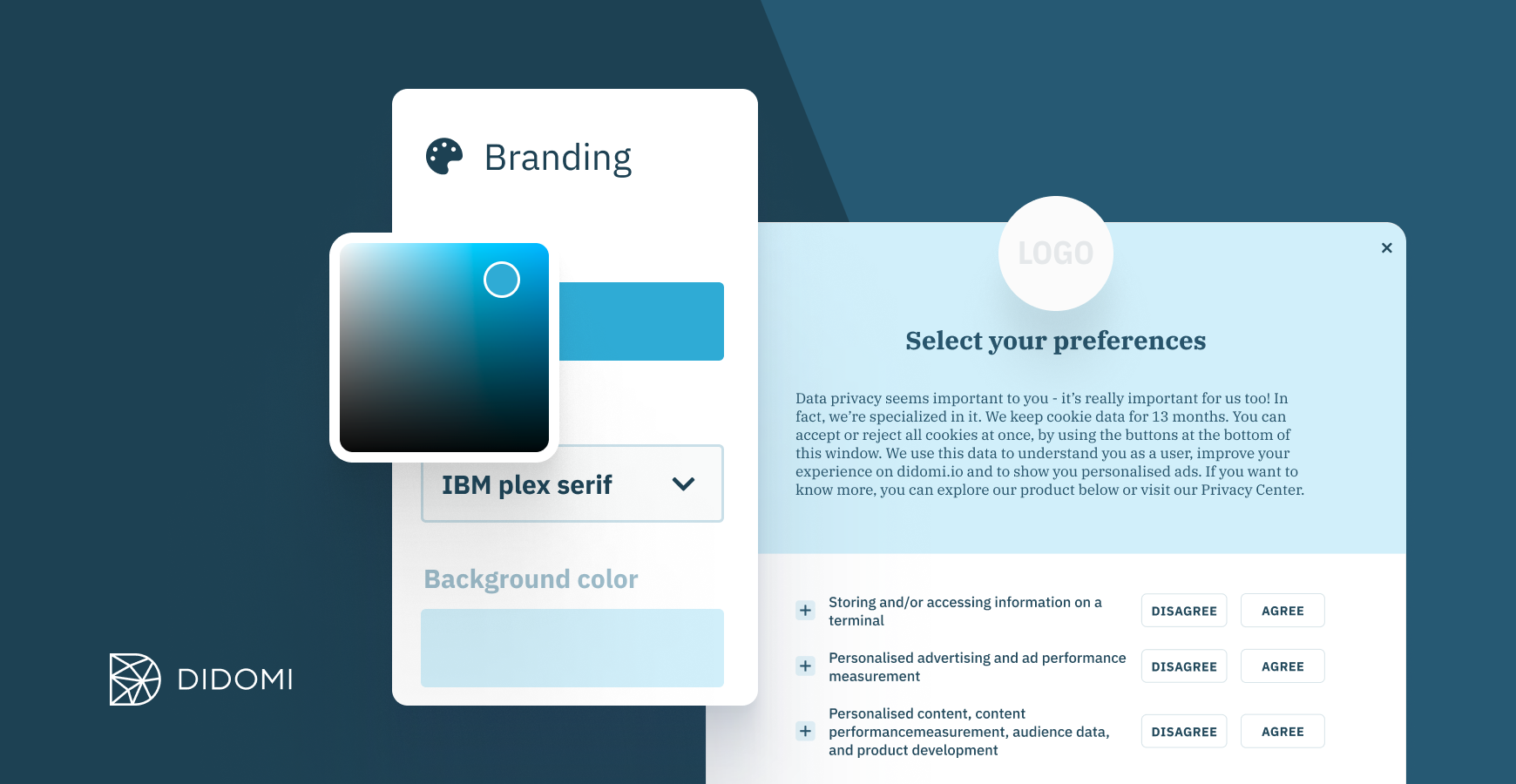Inspired by our recent webinar in which we discussed Why Consent is becoming one of the most important business KPIs to follow, we have created a three part article series on consent as a KPI. In our previous posts we debated whether consent is an annoyance or a business opportunity, and discussed how a consent management platform (CMP) can optimise online consent collection. Welcome to Part Three, where we consider consent collection across multiple channels, both online and offline, through the use of a Preference Center.
Summary
- What is consent and why is it important?
- What is a Preference Center?
- Building user trust with a Preference Center
- Why consent is becoming one of the most important business KPIs to follow
What is consent and why is it important?
Consent is termed by the GDPR as one of the 6 legal bases for data collection, and must be freely given; specific, informed and unambiguous. It must also be as easy to withdraw as to give. At Didomi, we believe that consent should be the main legal basis for data collection, because what is at stake is your customer’s knowledge, understanding and trust.
Do customers care about consent?
In the “Privacy Transition” currently underway, consumers expect information and choice: they want to know what their data is used for, and have the option to give and withdraw their consent. Consent represents choice and transparency, a leverage for trust, and trust a leverage for revenue. Yes, customers care about consent, and, yes, consent really is a business opportunity.
In our previous article, we discussed how a Consent Management Platform (CMP) allows you to optimise consent collection online (on websites and apps). However, consent can also be used to collect data on several other channels, both online and offline. This is where a Preference Center comes in.
What is a Preference Center ?
A Preference Center, or “preference management center”, is a space dedicated to the management of subscription settings. It allows you to centralise your customers’ consents and preferences across different channels (email, phone, cookies and more), as users are not only able to choose the precise data they wish to communicate to you, but also to indicate the frequency and content of communications.
Thanks to a Preference Center, you can collect consent and preferences both online and offline (delegated consent). It is also more precise thanks to the granularity of topics and channels. Its added value? Improve the relevance and targeting of communications by meeting user expectations, while providing an optimal experience.
Want to improve user experience and user trust through the use of a preference center? Get in contact with us.
What granularities can be configured with a Preference Center?
Let’s talk in practical terms, what data can be measured using a Preference Center? As you can see in the image below of the Didomi SDK, users have real choice over the data they choose to communicate to a brand.
This consent goes much further than simply agreeing to or refusing the use of cookies. Here are just a few examples of the choices users can make thanks to the Didomi Preference Center:
-
The user can opt in or out of newsletters,
-
They can choose the way they wish for a brand to contact them (for example by email, phone or post),
-
They can choose the frequency of contact between them and the brand (weekly, monthly, quarterly)
-
They can select specific topics for which they would like the brand to contact them (for example, they can choose to receive information if there is a sale on, or if a new product launches).
Building user trust with a Preference Center
The mission of a Preference Center is to centralise all the data that you have in your CRM, and it can be connected to any internal tool that you use to get in touch with your customers. By respecting user choice when it comes to topics and frequency of contact, for example, you are without doubt building trust between the user and your brand.
Prioritising data quality over data quantity
Recently, the marketing industry is shifting towards a more customer-centric approach, realising that leveraging their customer data matters more than collecting huge amounts of data that they then underuse. Before, marketers were simply trying to collect more and more data, as CRM software was designed with data collection in mind. The more fields you get your customers to fill, the more complete your CRM looks. But getting a bigger amount of data does not help building a customer-centric approach; customer-centricity is about quality, not quantity.
The importance of choice in customer engagement
If customers have been given real choice, and specifically opted in, they are far more likely to open their newsletters and interact with the communications that they receive from the brand. This will also allow you to understand your customers better. Ultimately, this will generate more brand loyalty, and more revenue.
Why consent is becoming one of the most important business KPIs to follow
This really leads us onto the main point, whether consent is becoming one of the most important KPIs to follow. If you’re collecting consent from your users then, in our opinion, the real question you should be asking yourself is “what is the worth of my users’ rights?”
Consent is so much more than just a legal requirement. It has become a key performance indicator for companies, because the more consent you get, the more relevant people are targeted, so the more revenue is generated.
🔄 WEBINAR REPLAY 🔄
— Didomi (@Didomi_io) November 4, 2020
Why has #consent become a key indicator for companies?
Is it really a business annoyance, or could it in fact become a business opportunity?
Access the full #webinar here👇 @lexology https://t.co/FVOOi28Q7C pic.twitter.com/4TtYC9yhu5
However, this is more than just a question of revenue. If you are collecting user data you should also be thinking about how you want your users to feel about your brand, and how you’d like to treat your customers. Think about it, don’t you want to increase brand trust, creating loyal customers who refer you to their friends and family?
A couple of years ago, marketing departments were not collaborating with legal departments, or DPOs, but, today, they are beginning to realise that, in terms of reputation, there is a huge benefit to becoming data compliant.
A lot of brands are embracing this transition to data compliance, also known as the “Privacy Transition”, recognising that it will build user trust and ultimately increase revenue. Want your company to be next? Schedule a demo with us.
|
Pierre & Vacances Center Parcs Group streamlines customer opt-in across multiple countries and languages. They generate user trust by providing a better preference management experience. Want to find out how they did it?
|










